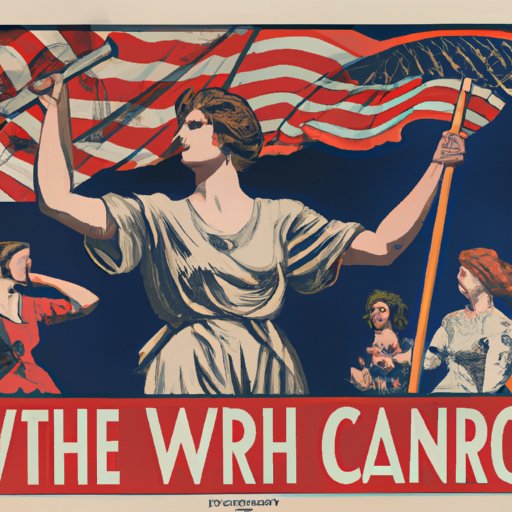Introduction
World War I (WWI) was an international conflict that took place between 1914 and 1918. It was one of the deadliest wars in history and drastically impacted the lives of many people across the globe. In the United States, WWI marked a major turning point in the nation’s history. The war brought about sweeping changes in American culture, from increased patriotism and national pride to the emergence of consumer culture and the rise of the suffrage movement. This article will explore how WWI changed American culture and its lasting effects.
Nationalism and Patriotism
When the United States entered WWI in April 1917, Americans were filled with a sense of national pride and unity. Citizens across the country rallied behind the war effort, displaying their support for the military and the nation as a whole. Patriotic events such as parades and rallies became commonplace, and citizens proudly displayed the American flag in their homes and businesses. The war also gave rise to a new sense of nationalism among Americans, with citizens feeling a strong connection to their nation and a desire to protect it.
Expansion of Governmental Power
In order to support the war effort, the U.S. government significantly increased its power and authority. New bureaucratic systems were created to manage the war’s resources, and military spending skyrocketed. This expansion of governmental power would have far-reaching implications for the American people, as it paved the way for the creation of large-scale welfare programs and other forms of social reform.
Emergence of Consumer Culture
The war effort and government spending also led to the emergence of a consumer culture in the United States. Advertising campaigns encouraged citizens to purchase war bonds and support the war effort, while mass production enabled companies to produce goods more quickly and cheaply. Consumers began relying heavily on credit to purchase these goods, leading to a growing dependence on debt. This shift towards consumerism would have lasting effects on the nation’s economy and society.
Rise of Suffrage Movement
WWI also brought about significant changes in gender roles and social norms. The war effort opened up new opportunities for women, as they were recruited to take on traditionally male roles in the workforce. This allowed women to gain new skills and experience, which helped to fuel the suffrage movement. By 1920, women had won the right to vote, marking a major milestone in the fight for gender equality.
Changes in Immigration Policies
The war also brought about changes in immigration policy. To prevent spies from entering the country, the government implemented strict restrictions on immigration. These restrictions made it difficult for immigrants to enter the United States and become citizens. This led to a decrease in immigration and an increase in xenophobia and racism.
Influence of Propaganda Posters
During WWI, the government used propaganda posters to promote the war effort and exalt military service. These posters featured graphic representations of soldiers and civilians and often contained patriotic messages. They were widely distributed throughout the country and had a powerful effect on public opinion. They helped to shape public perception of the war and increased support for the military.
Gender Roles in the Workforce
WWI also resulted in a significant shift in gender roles in the workplace. With men away fighting in the war, women stepped in to fill their positions. This gave women a chance to prove themselves and increase their earning potential. It also led to a change in social norms regarding women’s roles, as they were now seen as capable of performing traditionally male jobs.
Conclusion
WWI had a profound impact on American culture. It sparked a wave of patriotism and national pride, while also bringing about significant changes in government, consumer culture, and gender roles. These changes had a lasting effect on the nation, shaping the course of American history for decades to come. WWI forever changed American culture, and its legacy can still be seen today.
(Note: Is this article not meeting your expectations? Do you have knowledge or insights to share? Unlock new opportunities and expand your reach by joining our authors team. Click Registration to join us and share your expertise with our readers.)
